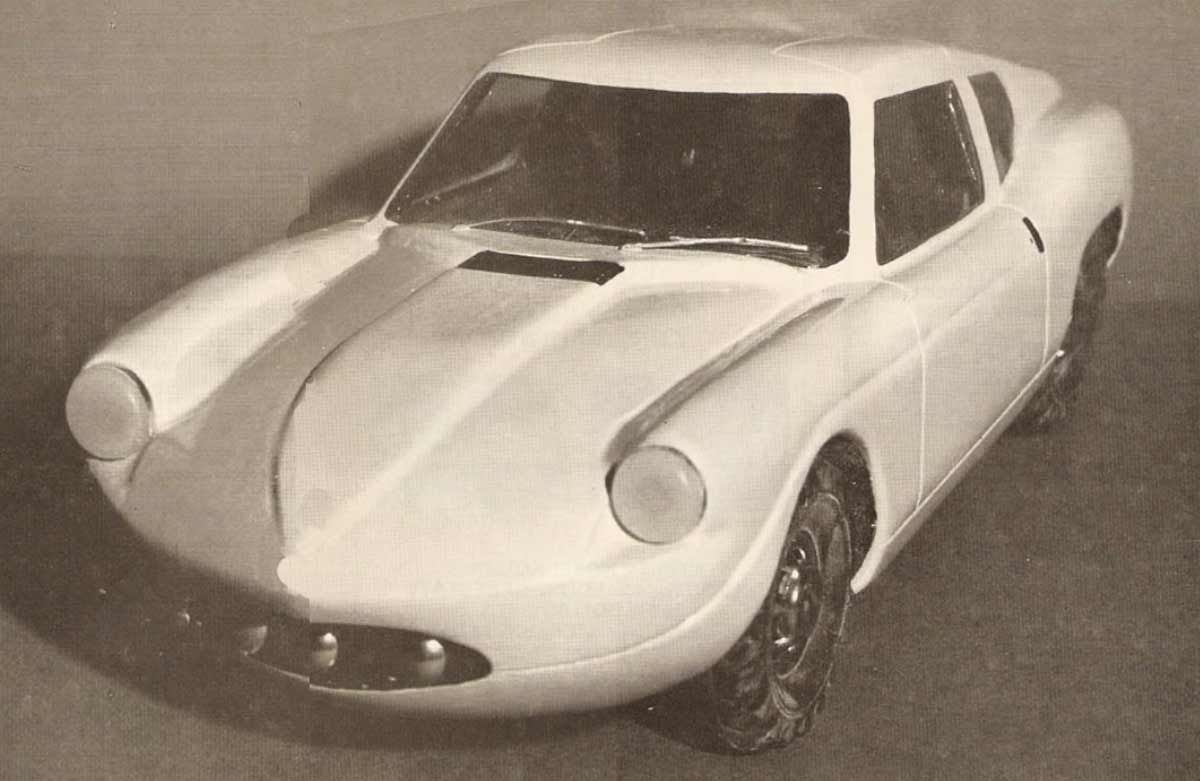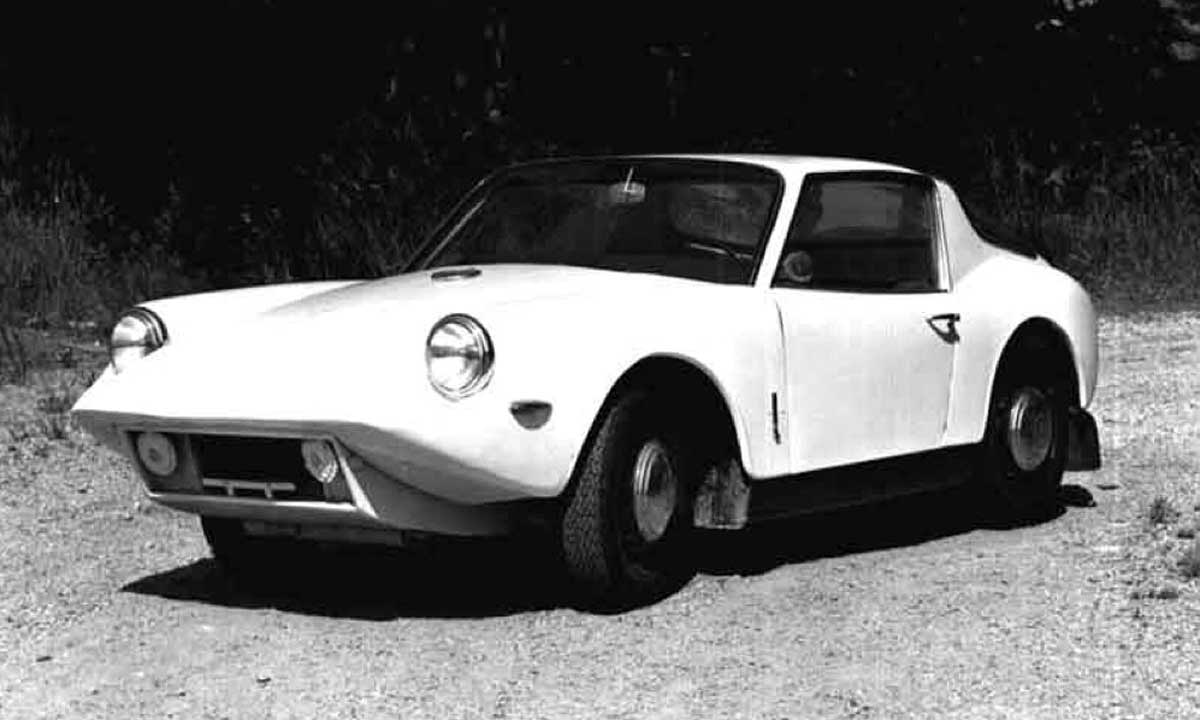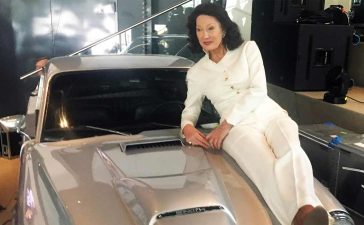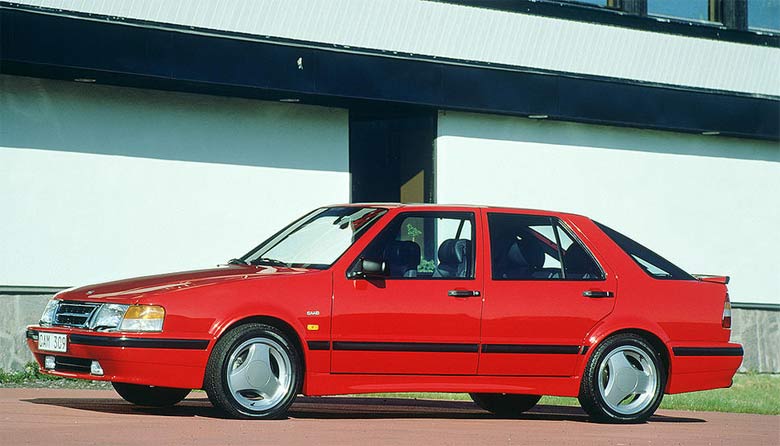This is the story behind MFI-13, the sports car project that evolved into the Saab Sonett.
This story begins a little over 60 years ago: Björn Karlström, a well-known Swedish industrial designer, worked for a company named Nyman. This company produced cycles, mopeds, small outboard engines and similar vehicles and intendt start building a new revolutionary motorcycle. The outcome was that only engineering work for the engine was completed, the rest of the cycle remaining undeveloped. The two-cylinderengine was used as an outboard engine, quite successfully, in fact, as it give 8 horsepower when when comparable engines weere developing only four or five.
Table of Contents
The Volkswagen Type 1 as a model
Björn Karlström asked the directors of the Nyman company if it would be possible to use that engine for other purposes and showed them some drawings of a small family car. It was rear-engined just like best-seller in Swedes at that time, the Volkswagen Type 1. Like the VW, the small Nyman car would use a four-cylinder engine constructed from two outboard engines build together. Instead of being watercooled, as for marine use, an air cooling system with a fan would be developed, also similar to the popular VW.
From Airplanes to Sports Cars
The Nyman company rejected the idea but Karlström would not give up his plans. Some years later he worked for Malme flying industry, the Malme Aircraft Factory (MFI Malmö Flygindustri), where not only small planes were produced but also high speed glassfiber boats for outboard engine designed by Karlström. Again, he asked the management if there was a possibility of building a small car. “At that moment I didn’t talk about cheap family car in the VW idiom. Instead I asked if they were interested in building a small, and probably expensive, sports car.” remembers Karlström.
The reason for this was very simple: “On a sports car it is easier to increase the cost without any buyer protestign against the price. With a small family car, one must be very careful with prices and therefore it’s easier to recoup development costs on the expensive sports car.” Karlström said at that time.

The first idea from Karlströmfor the MFI sports car was a very small two-seater with a mid-mounted engine. Lots of parts were standard Saab as they were easly obtainable and cheap. Engineer Rolf Mellde at Saab asked if company would be interested in the sports car project and Mellde was of course – as a great car lover – interested in a new Swedish sports car, but he also knew that his company had too much to do with the production of family cars to have any time, or money, to spend on such an exotic project and at that time the idea didnt progess further.
Karlström, again, didn’t give up
But Karlström, again, didn’t give up. He redesigned the MFI into front-engined car with a tubular frame still using many Saab parts. One part had quite unusual origins – the fuel tank. He “borrowed” the tank from the small MFI 9 aircraft. “With a capacity of 82 litres (about 18 gallons) it would have given the light car a wonderful range” he says.
The idea of a tubular frame was dropped quickly as buyers probably would be worried about the car’s strength in a crash. The next idea was for a plastic monocoque with reinforcements of metal glued to the plastic. Probably this was too far ahead of its time – about ten years before the Ford J-car was introduced. Soon after, Karlström presented a new version with a chassis made from sheet metal forming boxlike structure. Rolf Mellde at Saab favoured this construction perhaps because he had using a similar chassis when building the open Sonett sports car in the mid-Fifties.
“I started testing the chassis by buliding an exact scale model in cardboard. Then I borrowed a heavy old-fashioned smoothing iron and placed it in the middle of the model while its front and rear ends were mounted on supports, ” says Karlström on that occasion. “The experiment worked well as the chassis didn’t give way at all – proving that my theories also worked in practice.”
Project MFI-13
At this time the sports car project got its name – MFI 13. MFI stands for the company name in short and 13 is simply the project number. The MFI company produced planes and management knew that no pilot ever would fly a plane with a name including the number “13“. For that reason the number had been omitted from aircraft production but sports car buyers were perhaps not as superstitious as pilots.
Another engineer, Bjorn Andreasson, started on the MFI-13. He had earlier been involved with aeroplane design and a typical Andreasson solution was to combine radiator with the strut adding strength to the front suspension mountings, Instead of using one tank and one strut, he made the strut from a tune, forming the tank, saving weight, cost and space in the cramped engine compartment.
When the first chassis was ready the engineers found it so strong, they felt it could be used for other vehicles. “Let’s make an amphibian car while we are at it,” Karlström said and started making drawings for a small front-wheel driven Jeep-like vehicle that soon nicknamed “The Forest Sailor“. The idea stayedon the drawing board.
Saab’s Interest in Small Sports Cars
Fortunately Saab had been asked by their American dealers for a sports car and their own designer Sixten Sason, had been working on a prototype. As result, Saab became interested on the MFI project and took it over, resulting MFI taking on the role of supplier responsible for producing body.
Saab had no intention of taking production of the sports car to their main factory in Trollhattan. Instead a company, ASJ (Aktiebolaget Svenska Järnvägsverkstäderna), linked to Saab, took over production, buying parts from Saab and then selling completed cars back to them. The Saab company would then sell the cars with their name all over the world.
The fall of the MFI-13 prototype and the birth of the Sonett model
Still, the MFI-13 was not as good a sports car as expected, however, as the body lacked a lot both in design and quality. Very soon it became clear to Saab that their new sports car could not be just a productionised version of the MFI-13 prototype – they had to redesign the car from the ground up.
When Saab and ASJ took over, they at once started building up an all-new plastic body, based upon the Karlström design but with crisper lines. That car became known as the Saab Sonett (Sonett, supposedly named for the phrase “Så nätt den är” (“How neat it is”)).











